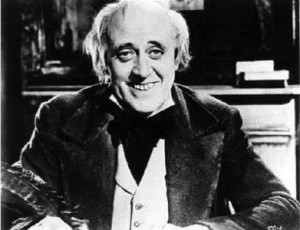A Lot Like Scrooge
There are quite a few characters associated with Christmas. There are the players in the scriptural account of the original Christmas story; Jesus, Mary, Joseph, the angel Gabriel, and a host of unnamed angels and shepherds and wise men. And though not mentioned in the Bible, a little drummer boy often shows up in Nativity scenes, thanks to the song written by Katherine Kennicott Davis in 1941.
Then there are the other stories and characters which have attached themselves to the Christmas season. Like the gang at the North Pole. There’s Santa and Mrs. Claus, assorted elves and flying reindeer. We can’t forget the Grinch and the citizens of Whoville. And a few movies have become such seasonal traditions that their players have become a part of our yearly celebration. There’s Ralphie and his family and friends from “A Christmas Story,” George and Mary Bailey, Mr. Potter, Uncle Billy, Bert the cop and Ernie the cab driver and the rest of the folks from Bedford Falls and “It’s A Wonderful Life.”
And, of course, there are the characters from Charles Dickens “A Christmas Carol.” Published in 1843, Dickens story introduced us to Ebenezer Scrooge, his hapless clerk Bob Cratchit, Cratchit’s son Tiny Tim, Jacob Marley, Mr. Fezziwig and the ghosts of Christmas Past, Present and Yet To Come. The classic story has never gone out of print and has been adapted for the stage, screen and TV. It’s a story of redemption at its heart.
Practically all of these figures, the historical as well as the fictional, provide us with some sort of lesson or example, even if it’s a cautionary one. As I contemplate the scores of names we associate with this season there are many I’d like to say I emulate. Joseph, the step-father of Jesus, provides a wonderful example of obedience and compassion. The shepherds and wise men sought out the Christ child, worshiped Him and then shared what they had seen and heard. Even jolly old St. Nick provides an example of selfless giving and joy.

But the character I most readily identify with is Dickens’ Ebenezer Scrooge. The Scrooge I see in myself is the redeemed Scrooge. The man who has weathered visits from three ghosts and learned the lessons they had to offer. I see myself as the Ebenezer Scrooge of December 26. The man who has fully realized the folly and error of his former life, his wasted youth and missed opportunities for love and joy and peace. The man who now knows the fate he deserves but who has been granted a second chance to grasp life anew thanks to the truth of the gospel of Christmas. And with that knowledge Scrooge, and I, now posses an inexpressible joy.
There’s a scene near the very end of the 1951movie version of “A Christmas Carol” starring Alastair Sim as Scrooge that sums up how both Scrooge and I now view our redeemed lives. It’s the morning after Christmas. Scrooge hurries to his office in order to arrive before his clerk, Bob Cratchit. Cratchit, much as Scrooge had expected, arrives late, after “making rather merry,” the day before. Scrooge calls him into this office and Cratchit fears the worst. But Scrooge, instead of chastising or firing Cratchit, raises his clerk’s salary and sends him out to buy a new coal scuttle to warm up the office. After Cratchit leaves Scrooge attempts to get some work done. But he can’t stop laughing. He scowls and berates himself saying, “I don’t deserve to be so happy.” And then he begins to laugh again, saying, “But I can’t help it, I just can’t help it.”
That’s what the truth of the Christmas story has done for me. And barely a day goes by that I don’t, along with old Ebenezer Scrooge, thank the Lord for the unshakable joy He has given me, undeserved as it is.
